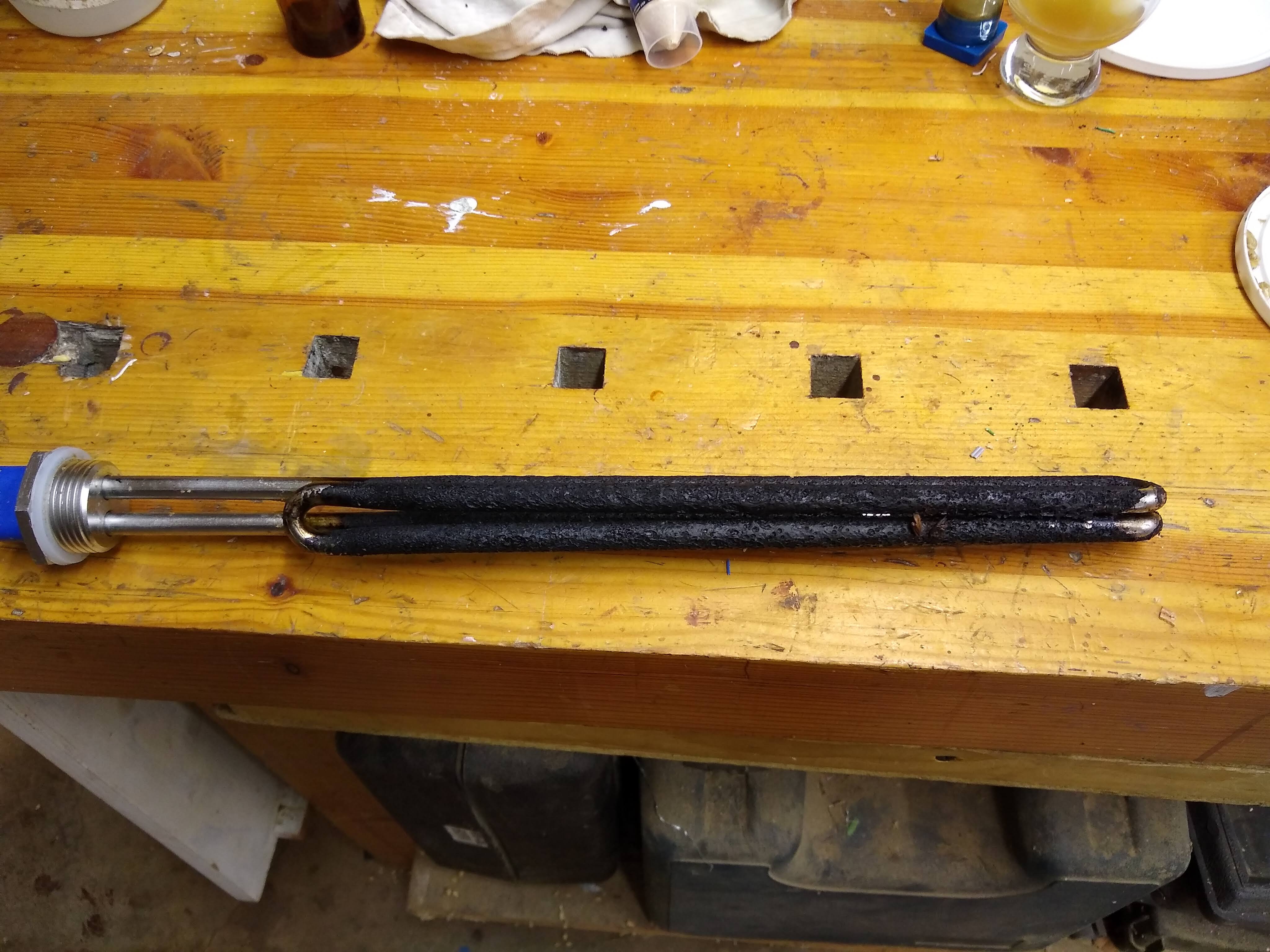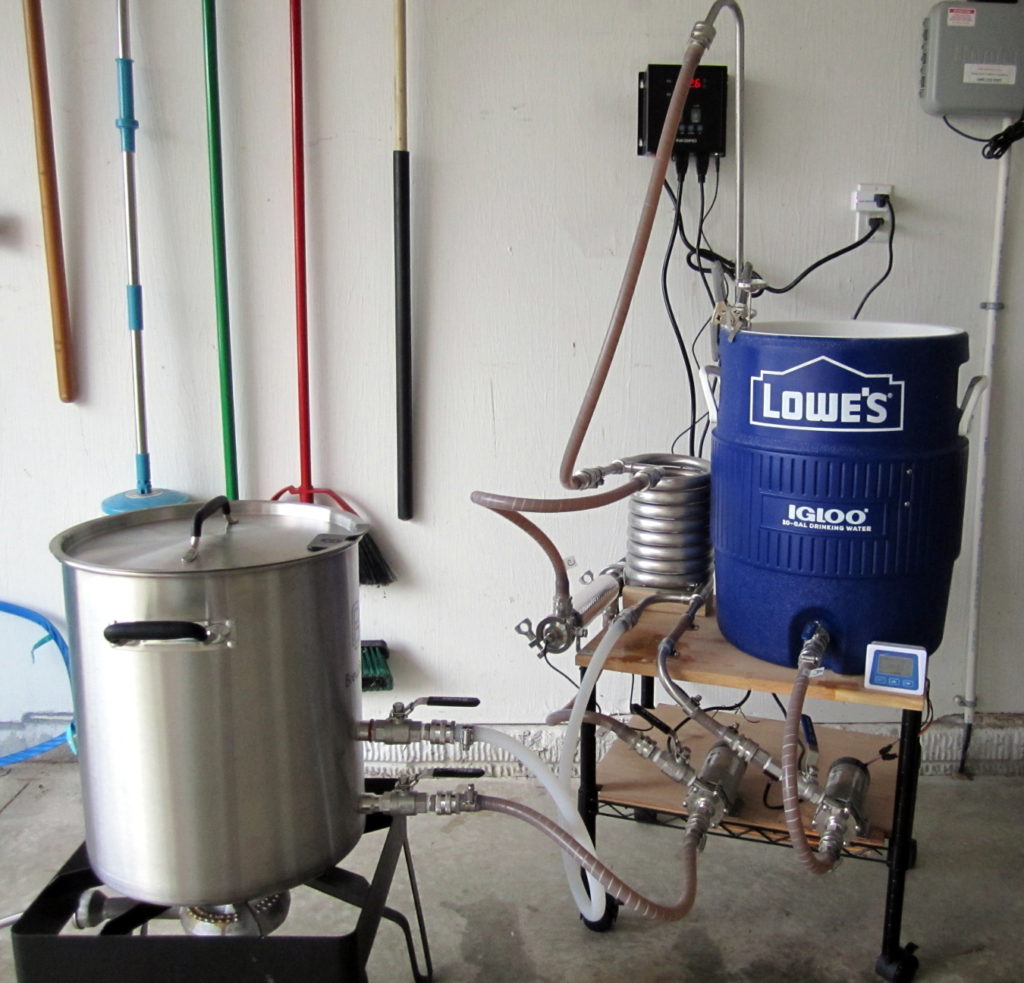I've been RIMS brewing for years with my 1/2 barrel gas-fired system. Maintaining mash temperatures has always been a pain in the rear though, so recently I put together a PID-controlled electric inline heater for the recirc. The heating element is this:
DERNORD 240V 5500W Foldback Heating Element Water Heater with Low Watt Density:Amazon:Home Improvement
It's a 240V, 5500W, foldback, low-density element. I run it on 120V, so it should be 1400W and pretty low density. I've been wanting to brew a Hefe Weizen, and I thought this would be the perfect test for the heating element, as I could use it for a multi-step mash. I mashed in at ~99F, and stepped through a couple rests, when the unmistakable smell of scorched wort made itself known. I ended up dumping the batch; it wasn't even worth pitching the yeast.
How do I avoid the scorching? For the steps, the element was running at full power. I had the flow turned back a bit to avoid compaction, but I was controlling the temp at the outlet of the element so the wort temperature never got above my step target. I assumed running a low watt density element at half-voltage should give me plenty of leeway, what went wrong?
DERNORD 240V 5500W Foldback Heating Element Water Heater with Low Watt Density:Amazon:Home Improvement
It's a 240V, 5500W, foldback, low-density element. I run it on 120V, so it should be 1400W and pretty low density. I've been wanting to brew a Hefe Weizen, and I thought this would be the perfect test for the heating element, as I could use it for a multi-step mash. I mashed in at ~99F, and stepped through a couple rests, when the unmistakable smell of scorched wort made itself known. I ended up dumping the batch; it wasn't even worth pitching the yeast.
How do I avoid the scorching? For the steps, the element was running at full power. I had the flow turned back a bit to avoid compaction, but I was controlling the temp at the outlet of the element so the wort temperature never got above my step target. I assumed running a low watt density element at half-voltage should give me plenty of leeway, what went wrong?






![Craft A Brew - Safale S-04 Dry Yeast - Fermentis - English Ale Dry Yeast - For English and American Ales and Hard Apple Ciders - Ingredients for Home Brewing - Beer Making Supplies - [1 Pack]](https://m.media-amazon.com/images/I/41fVGNh6JfL._SL500_.jpg)























































